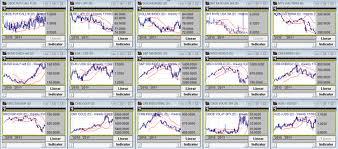
Angel Antonio Barajas Alonso
Modelo de valoración de clubes de fútbol basado en los factores clave de su negocio
Universidad De Navarra, Facultad de Ciencias Económicas y Empresariales, 2004
1.- INTRODUCCIÓN
1.1.- EL PRECEDENTE INGLÉS
1.2.- EL CASO ESPAÑOL
1.3.- LA VALORACIÓN ECONÓMICA DEL FÚTBOL
1.4.- METODOLOGÍA Y CONTENIDOS
2.- EL NEGOCIO DEL FÚTBOL: ENTORNO Y FACTORES DETERMINANTES
2.1.- NORMATIVA POR LA QUE SE RIGEN LOS CLUBES DE FÚTBOL EN ESPAÑA
2.1.1.- Ley del Deporte (Ley 10/1990, de 15 de octubre)
2.1.2.- La figura de las Sociedades Anónimas Deportivas
2.1.3.- Adaptación sectorial del Plan General de Contabilidad a las Sociedades Anónimas Deportivas
2.1.4.- La Liga Nacional de Fútbol Profesional (LNFP)
2.1.5.- La UEFA
2.2.- LA COMPETICIÓN
2.2.1.- Organización de las competiciones
2.3.- LA CONTRATACIÓN DE JUGADORES
2.3.1.- Sistemas de contratación: principales alternativas y evolución
2.3.2.- Reglamento sobre el estatuto y las transferencias de jugadores
2.3.3.- Las cláusulas de rescisión
2.3.4.- Los jugadores con “carta de libertad”
3.- MÉTODOS DE VALORACIÓN DE UN EQUIPO DE FÚTBOL.
3.1.- EL VALOR DE UNA EMPRESA
3.1.1.- La valoración de empresas en general: métodos de valoración
3.1.2.- El descuento de flujos de caja
3.2.- VALORACIÓN DE UN CLUB DE FÚTBOL
3.2.1.- Valoración de franquicias deportivas.
3.2.2.- Valoración de aspectos parciales de los clubes de fútbol
3.2.3.- Valoración global de los clubes de fútbol
4.- ANÁLISIS ECONÓMICO-FINANCIERO DE LAS SAD Y LOS CLUBES DE FÚTBOL
4.1.- LA CALIDAD DE LA INFORMACIÓN FINANCIERA DEL FÚTBOL ESPAÑOL
4.1.1.- Principales salvedades que aparecen en los informes de auditoría de los clubes de fútbol españoles
4.2.- LAS CUENTAS DE PÉRDIDAS Y GANANCIAS
4.2.1.- Primera División
4.2.2.- Segunda División
4.3.- ESTRUCTURA ECONÓMICO-FINANCIERA
4.3.1.- El Balance de la Primera División
4.3.2.- El balance de la Segunda División
5.- FINANCIACIÓN DE LOS CLUBES DE FÚTBOL
5.1.- RECURSOS PROPIOS: CAPITAL SOCIAL
5.1.1.- Composición accionarial
5.1.2.- Expectativas de los inversores en una SAD
5.1.3.- Negociación en Bolsa
5.1.4.- La experiencia bursátil de los clubes de fútbol europeos
5.2.- ENDEUDAMIENTO A LARGO PLAZO: POSIBILIDADES Y EXPERIENCIAS HISTÓRICAS
5.3.- ENDEUDAMIENTO CON ENTIDADES FINANCIERAS Y POSICIÓN FINANCIERA DE LOS CLUBES
5.3.1.- Clubes con Saldo de Tesorería Positivo
5.3.2.- Clubes con endeudamiento con entidades de crédito
6.- LAS FUENTES DE INGRESOS DE UN CLUB DE FÚTBOL
6.1.- INGRESOS POR ASISTENCIAS A LOS ESTADIOS
6.1.1.- Políticas de precios
6.2.- INGRESOS DE ABONADOS Y SOCIOS
6.3.- INGRESOS POR RETRANSMISIONES
6.4.- LA CONTRATACIÓN DE LOS DERECHOS DE RETRANSMISIÓN TELEVISIVA
6.4.1.- Competiciones domésticas de los clubes de fútbol españoles
6.4.2.- Competiciones internacionales de los clubes de fútbol españoles
6.5.- NEGOCIACIÓN CONJUNTA DE DERECHOS TELEVISIVOS: MECANISMOS DE TRASLADO
6.6.- PUBLICIDAD, PATROCINIO Y MERCHANDISING
6.7.- AYUDAS PÚBLICAS
6.7.1.- Subvenciones
6.7.2.- Apuestas Deportivas del Estado
6.8.- INGRESOS EXTRAORDINARIOS POR LA VENTA DE JUGADORES
6.9.- DEFINICIÓN DE LAS VARIABLES DE INGRESOS A INCLUIR EN EL MODELO DE VALORACIÓN. PECULIARIDADES PARA LOS EQUIPOS ESPAÑOLES DE LA MUESTRA
6.9.1.- Variables de ingresos empleadas
6.9.2.- Ingresos de explotación
6.9.3.- Ingresos financieros
6.9.4.- Ingresos extraordinarios
6.9.5.- Relaciones entre las variables de ingresos de los equipos españoles
7.- EFECTOS DE LOS RESULTADOS DEPORTIVOS EN LOS INGRESOS Y EN LOS RESULTADOS ECONÓMICOS
7.1.- ¿MAXIMIZACIÓN O SATISFACIÓN?
7.2.- RESULTADOS ECONÓMICOS Y DEPORTIVOS
7.3.- LA MEDICIÓN DE LOS RESULTADOS DEPORTIVOS
7.4.- INFLUENCIA DE LOS RESULTADOS DEPORTIVOS EN LOS ECONÓMICOS
7.5.- INFLUENCIA DE LOS RESULTADOS DEPORTIVOS EN LOS INGRESOS
7.6.- INFLUENCIA DEL ENDEUDAMIENTO Y LAS INVERSIONES EN LOS RESULTADOS DEPORTIVOS
8.- LA CALIDAD DE LAS PLANTILLAS
8.1.- CONCEPTO DE CALIDAD EN EL FÚTBOL
8.2.- INDICADORES DE LA CALIDAD DE LA PLANTILLA
8.2.1.- Aproximación a través del rendimiento del jugador
8.2.2.- Aproximación por el Índice de Calidad del Jugador
8.2.3.- Aproximación financiera
8.3.- EFECTO DE LA CALIDAD EN LOS RESULTADOS
8.3.1.- Variables de resultados influidas por la calidad
8.3.2.- Las medidas de la calidad
8.3.3.- Relación calidad y resultados
8.3.4.- Conclusiones previas
9.- LA AFICIÓN
9.1.- CONCEPTO DE AFICIÓN EN EL FÚTBOL
9.2.- INCIDENCIA DEL ENTORNO SOCIOECONÓMICO EN LA AFICIÓN A UN CLUB DE FÚTBOL
9.2.1.- Variables de afición
9.2.2.- Variables socioeconómicas
9.2.3.- Relación entre las variables socioeconómicas y la asistencia
9.3.- INCIDENCIA DE LA CALIDAD DE LA PLANTILLA EN LA AFICIÓN A UN CLUB DE FÚTBOL
9.4.- INCIDENCIA DEL RENDIMIENTO DEPORTIVO EN LA AFICIÓN A UN CLUB DE FÚTBOL
9.5.- MODELO CONJUNTO DE EXPLICACIÓN DE LA ASISTENCIA
9.6.- INCIDENCIA DE LA AFICIÓN EN LOS INGRESOS DEPORTIVOS
10.- MODELO DE DETERMINACIÓN DEL VALOR ECONÓMICO DE LOS EQUIPOS ESPAÑOLES
10.1.- PROBLEMAS PARA LA DETERMINACIÓN DE LOS FLUJOS DE CAJA Y SOLUCIONES PROPUESTAS
10.2.- ELEMENTOS PARA LA CREACIÓN DE VALOR ECONÓMICO EN EL FÚTBOL
10.3.- FACTORES QUE CONDICIONAN EL FLUJO DE CAJA LIBRE EN LOS CLUBES DE FÚTBOL DE LA LIGA INGLESA
10.4.- MODELO DE DETERMINACIÓN DEL FLUJO DE CAJA LIBRE
10.5.- CÁLCULO DE ÍNDICES DEL FACTOR DE VALOR ECONÓMICO
10.6.- CÁLCULO DEL ÍNDICE DEL FLUJO DE CAJA EN LOS EQUIPOS INGLESES
10.7.- FUNCIÓN QUE RELACIONA EL ÍNDICE DEL FLUJO DE CAJA CON EL DEL FACTOR ECONÓMICO
10.8.- ESTIMACIÓN EL FLUJO DE CAJA LIBRE ESPERADO DE LOS CLUBES ESPAÑOLES
10.9.- ESTIMACIÓN DE LA TASA DE DESCUENTO
10.10.- ESTIMACIÓN DEL VALOR DE UN CLUB DE FÚTBOL PROMEDIO
10.11.- EL VALOR DE UN CLUB SEGÚN UNOS OBJETIVOS Y PARAMETROS




